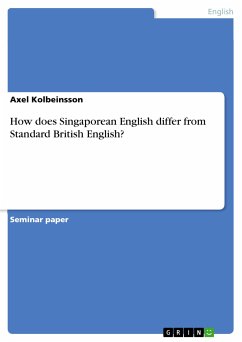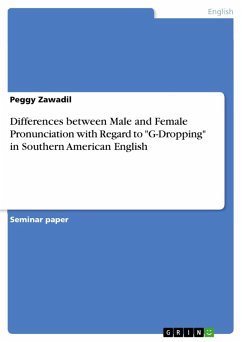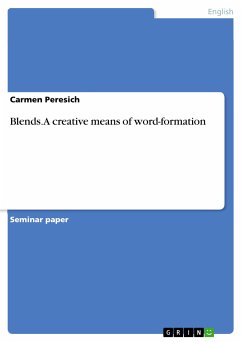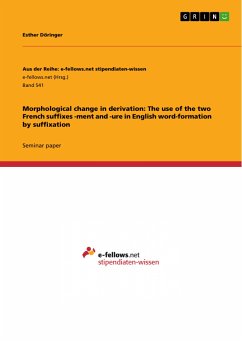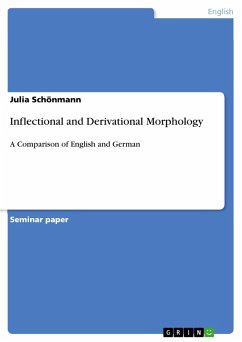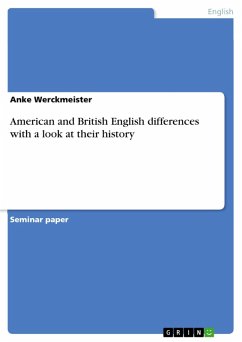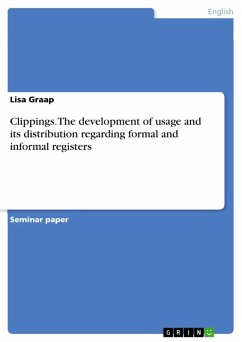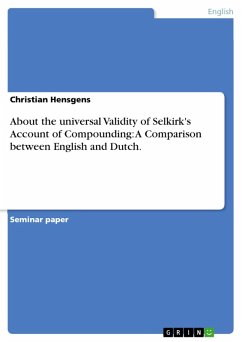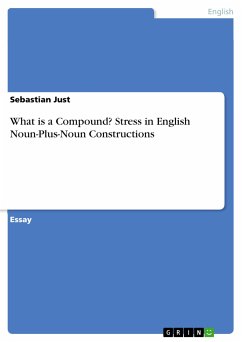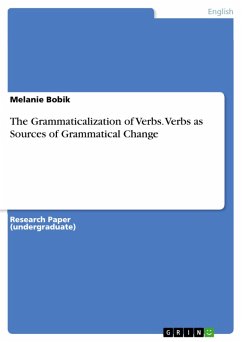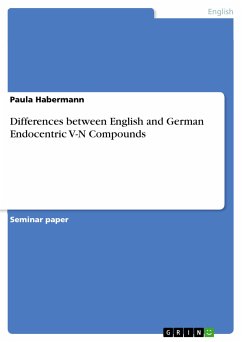
Differences between English and German Endocentric V-N Compounds (eBook, PDF)
Sofort per Download lieferbar
Statt: 15,95 €**
13,99 €
inkl. MwSt. und vom Verlag festgesetzt.
**Preis der gedruckten Ausgabe (Broschiertes Buch)
Alle Infos zum eBook verschenkenWeitere Ausgaben:

PAYBACK Punkte
0 °P sammeln!
Seminar paper from the year 2021 in the subject English Language and Literature Studies - Comparative Literature, grade: 2,3, Technical University of Braunschweig, language: English, abstract: My term paper will be about the differences between English and German V-N compounds. I will focus on endocentric compounds since German lacks exocentric V-N compounds. An example of an endocentric V-N compound that exists in both languages would be the English "driftwood" with its German counterpart "Treibholz". It is interesting to investigate whether the differences between English and German endocent...
Seminar paper from the year 2021 in the subject English Language and Literature Studies - Comparative Literature, grade: 2,3, Technical University of Braunschweig, language: English, abstract: My term paper will be about the differences between English and German V-N compounds. I will focus on endocentric compounds since German lacks exocentric V-N compounds. An example of an endocentric V-N compound that exists in both languages would be the English "driftwood" with its German counterpart "Treibholz". It is interesting to investigate whether the differences between English and German endocentric V-N compounds may be caused by a general contrast between the two languages. By that, I mean the tighter (German) and looser (English) fit between form and function which was suggested by Hawkins (1986) as a general parameter of difference (Hawkins, 1986, p. 6). I will start by explaining basic terminology of V-N compounding and Hawkins' approach. After the basic elements are clarified, I will turn to my research question: "What are the major differences between English and German endocentric V-N compounds, and can they be linked to Hawkins' general parameter of difference?". To answer this question, I will use a paper by Volker Gast from 2008, which is called "Verb-noun compounds in English and German".
Dieser Download kann aus rechtlichen Gründen nur mit Rechnungsadresse in A, B, BG, CY, CZ, D, DK, EW, E, FIN, F, GR, HR, H, IRL, I, LT, L, LR, M, NL, PL, P, R, S, SLO, SK ausgeliefert werden.




